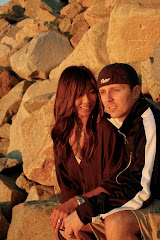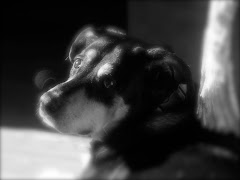The morning was fairly relaxed; no 0400 wakeup call, no Hum V preparation. Instead, our team met up at one of the warehouses on Camp Funstun where we were informed of our last “Combat Life Saver” evolution. I realize I haven’t spoken of this in a while, so let me get you up to speed. The Combat Life Saver course is designed for every soldier heading into war. They teach the basics of medical response as it pertains to the military and combat care. A few principles include the “Golden Hour” (a finite period of time in which a critically wounded soldier should be medically evacuated to a medical facility for advanced care to increase the chances of survival), “Care under fire” (just as it sounds; first and foremost, return fire and provide security prior to administering care), and “Tourniquets are invaluable”…OK, you won’t find that last one listed anywhere, but it’s true…so they say.
This evolution was a practical exercise. We were given a scenario in which a large piece of machinery had blown up on our base and the explosion and fire had injured multiple people. Our medical contingency consisted of 14 Navy (all medical) and about 15-20 Army (not medical) personnel to handle the situation. Following a siren to simulate an alarm for the explosion, we all headed outside to assess the situation. As a means of providing the Army team more medical experience (aren't we generous), we let them be the first responders and treat the patients initially. Subsequently, they brought the wounded soldiers to us and we triaged them for further medical need and evacuation. Ultimately, we prioritized each of the eight patients for transport via a Blackhawk helicopter. The exercise only lasted about 30 minutes.
The second scenario (for our two teams) depicted a mortar (bomb) exploding in a cafeteria injuring several people. Again, to offer our Army counterparts more practice, our Navy team acted as “couriers of wounded” and mentors to assist in triage and treatment. To enrich our experience, the instructors set off explosions every 3-5 minutes. No destruction occurred via the explosions, lest a little bit of my hearing. All of the injured soldiers were actors and one gentleman in particular was acting deranged. It was quite humorous for the first few minutes as he yelled expletives; though eventually, he just became annoying. I suppose that was the point; how to deal with the “crazies”.
(Josh and Mike giddy about the range.)
While the Combat Life Saver evolutions took up the morning, we were rife with anticipation for the afternoon. You see, we were headed to the range to fire the MK 19 grenade launcher…and as a bonus, we didn’t have to clean the weapons afterwards. (Air Force got stuck with that duty, since we cleaned all of the CrewServ Weapons the prior week...we still got the short end of that deal.) Essentially, this was a fun day on the range.
(Me just gettin' a feel for the MK 19.)
(Grenades!!!!)
By the time we reached the range, the wind was whistling and cloud cover had drowned out most of the warmth. Bundled in our rain gear (though it never did) we all gathered around the instructor and learned about the “ins and outs” of the weapon, referred to as PCM (Preventive/Prevention Cleaning and Maintenance). Following this, we picked up our ammunition and headed to the Hum-Vs. They mount the MK 19s on the Hum-Vs, just like the .50 Cal and other CrewServs. We were each give 32 rounds to fire. While aiming is possible via “traverse and elevation” dials, this is certainly more of an “area” weapon and shooting for vicinity is common. Basically, when it was my turn, I blasted off my 32 rounds with reckless abandon and burned through my ammo in less than 2 minutes. I liked it...it was fun. If you paid attention, as you stood behind the Hum-V watching others shoot, you could see the rounds as black dots in the air and follow their trajectory.
(Just waiting our turn.)
Again, it was fun, but it was cold out and everyone was a bit tired from the long day at the range yesterday. With that, we called it a day.







